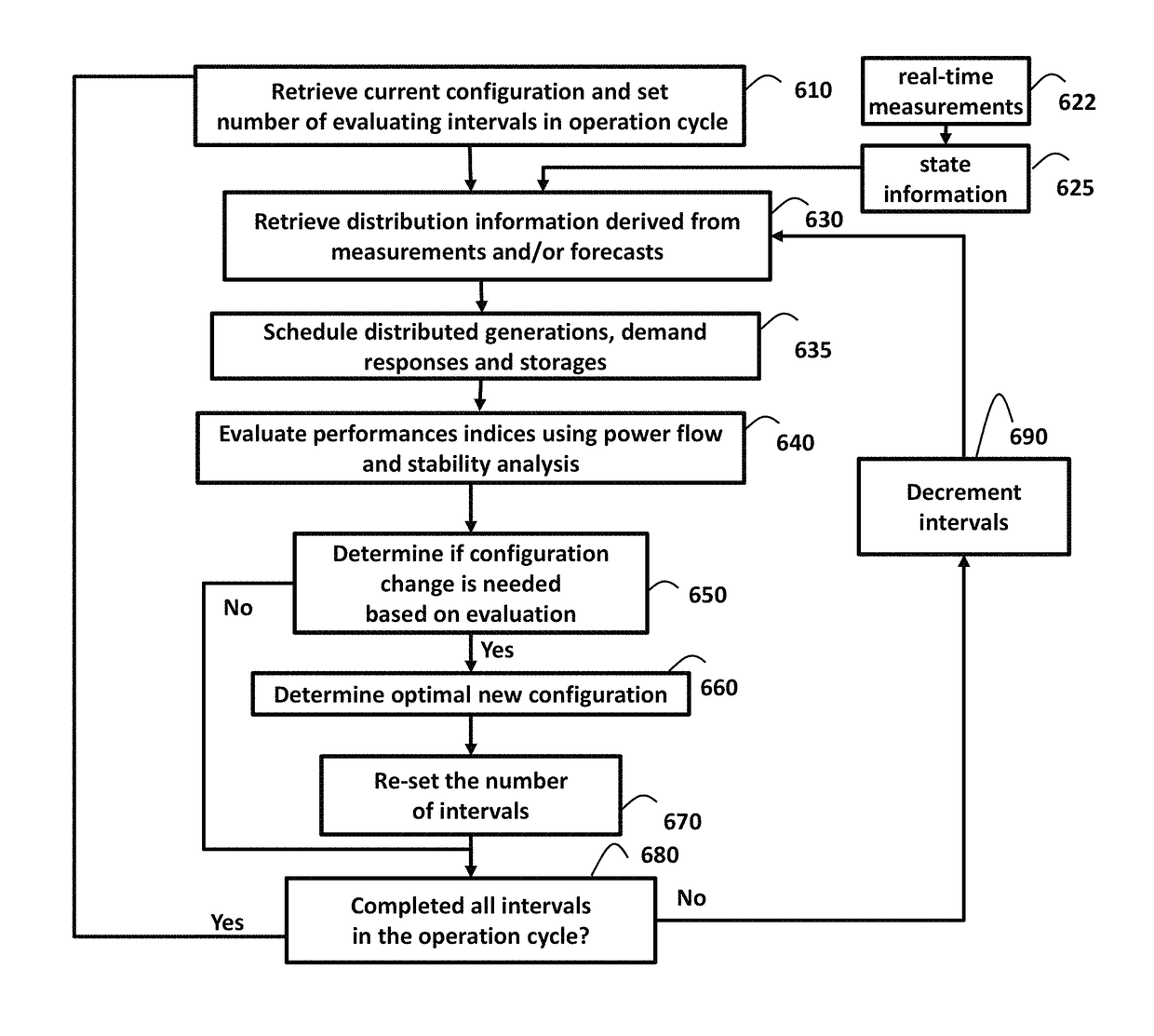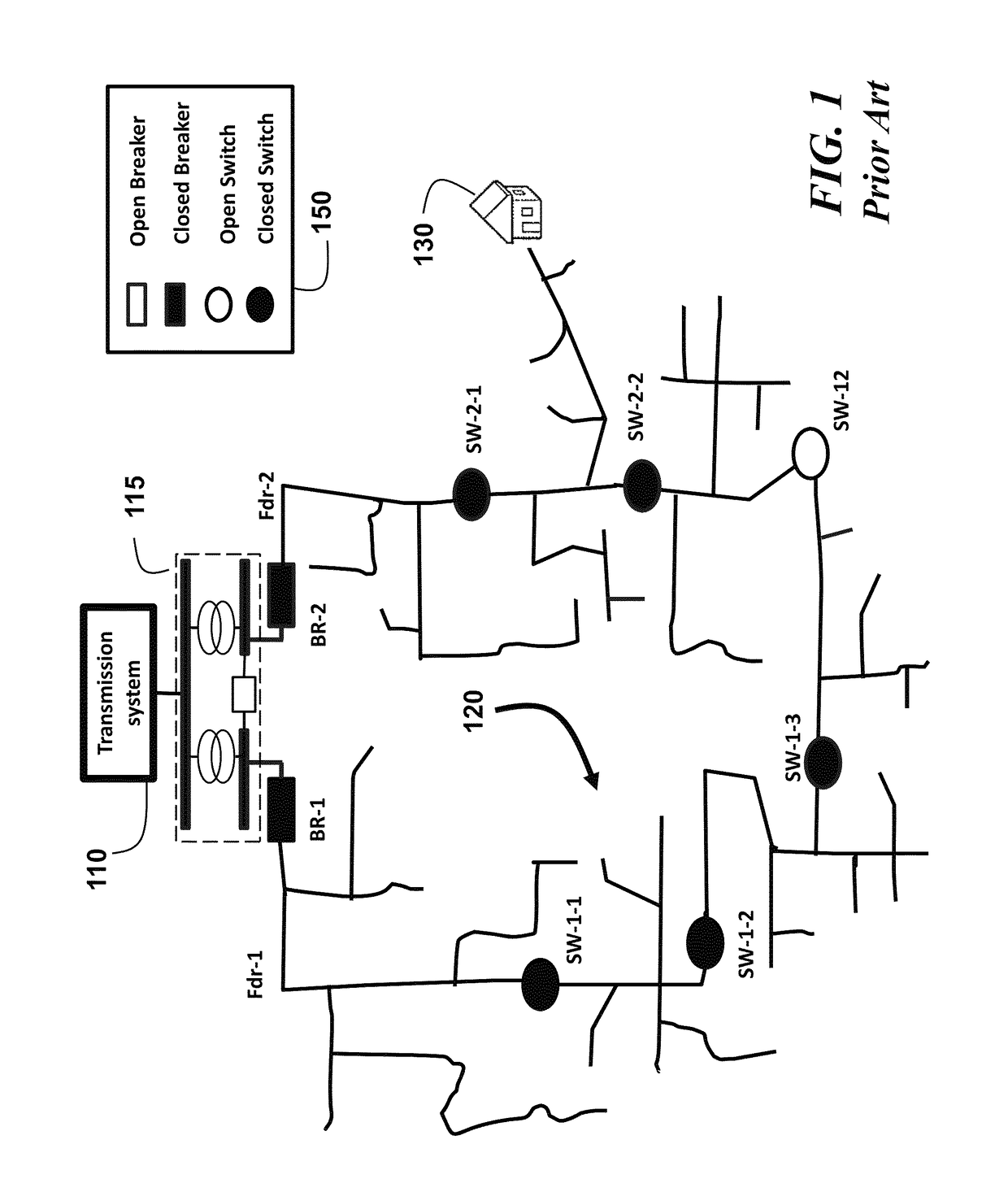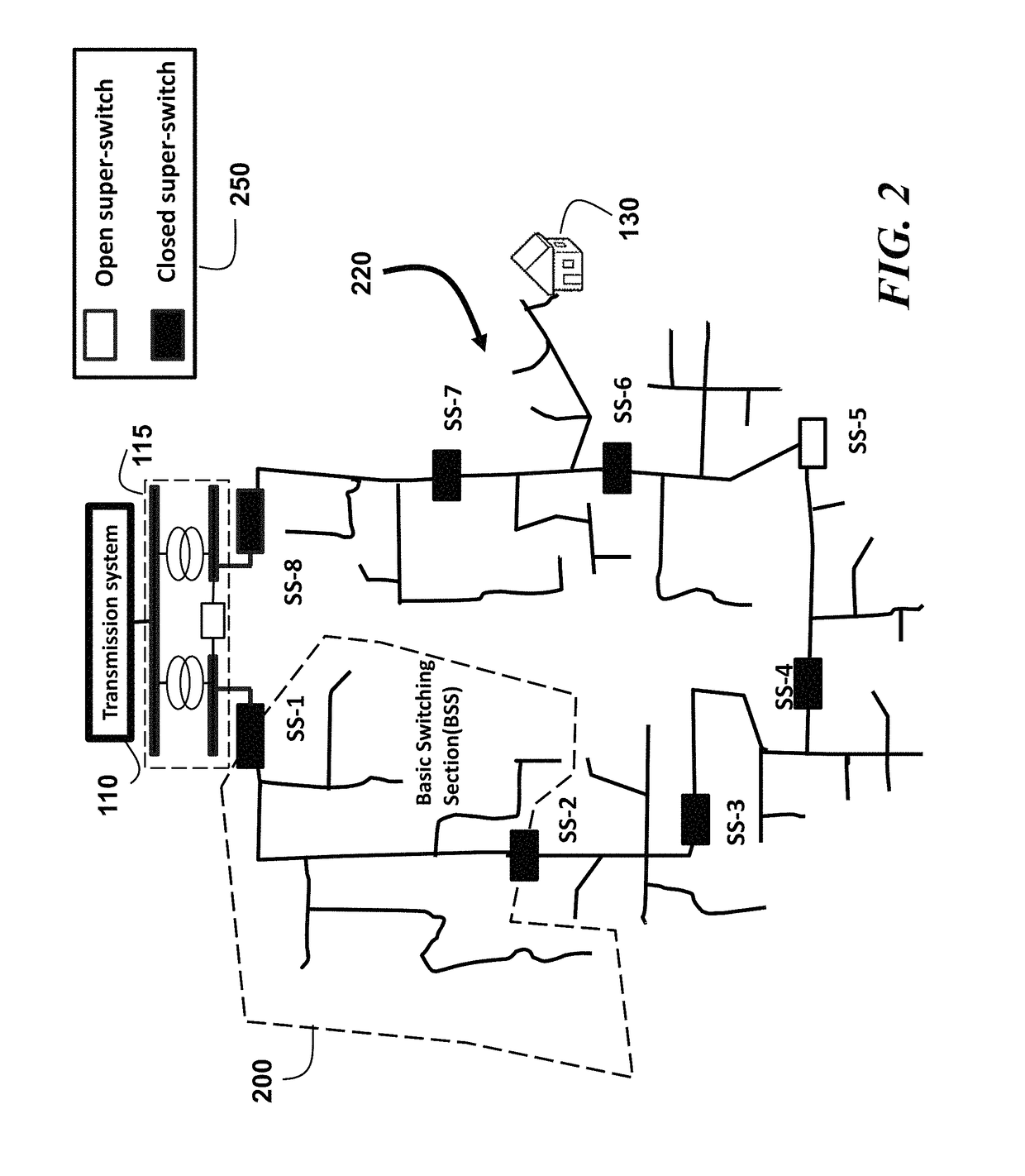Dynamic and adaptive configurable power distribution system
a power distribution system and dynamic technology, applied in the direction of power network operation system integration, sustainable buildings, contiguous building ac circuit arrangement, etc., can solve the problems of new problems for the operation and control affect the entire distribution system, and affect the configuration of the distribution system, so as to increase the stability guarantee and good measure of stability level
- Summary
- Abstract
- Description
- Claims
- Application Information
AI Technical Summary
Benefits of technology
Problems solved by technology
Method used
Image
Examples
Embodiment Construction
[0030]Distribution System Configuration
[0031]As shown in FIG. 2, a power distribution system 220 according to embodiments of the invention can use a radial topology with a tree structure. Other topologies, such mesh, looped, and tied ring are also possible.
[0032]In the system, conventional sectionalizing and tie switches are replaced with, e.g., solid state super-switches 250. In FIG. 2, there are eight super-switches. The switches SS-1 and SS-8 are connected to the transmission system (main grid) 110. These switches can open and close at a relatively high frequently when compared with conventional electromechanical switches. The switches can be equipped with phasor measurement units (PMU) or synchrophasors to enable real-time monitoring and control. The PMU can supply voltages and currents measurements at high sampling rate, for examples, 60 samples per second.
[0033]Basic Switching Sections
[0034]Using the super-switches the distribution system can be configured with basic switching...
PUM
 Login to View More
Login to View More Abstract
Description
Claims
Application Information
 Login to View More
Login to View More - R&D
- Intellectual Property
- Life Sciences
- Materials
- Tech Scout
- Unparalleled Data Quality
- Higher Quality Content
- 60% Fewer Hallucinations
Browse by: Latest US Patents, China's latest patents, Technical Efficacy Thesaurus, Application Domain, Technology Topic, Popular Technical Reports.
© 2025 PatSnap. All rights reserved.Legal|Privacy policy|Modern Slavery Act Transparency Statement|Sitemap|About US| Contact US: help@patsnap.com



